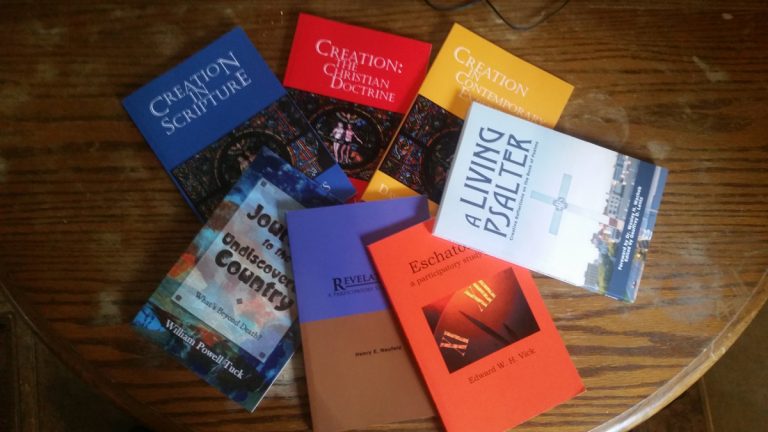The Orthodox Study Bible: Wrap-Up (For the Moment)
I received the Orthodox Study Bible free from Thomas Nelson in their blogger book review program, and as I have been using it in my personal devotions and study for my lectionary notes, (which notes have languished during a very busy period), I have already written about it substantially.
But just what does it mean to “read” a study Bible. Should it mean to read through it from cover to cover, to use it as you normally read a study Bible, or perhaps to read certain relevant portions? I don’t know how Thomas Nelson will interpret this, and I have no intention to argue with them should they interpret it differently than I do–after all, they sent me a free book!–but I have chosen to take it in the second way.
Now in using it in that fashion it would probably be another year or so before I would have read all of the book introductions and notes, at which point I would simply note that I have previously read the entire NKJV text of the Bible, which covers the New Testament, and I would have seen most of the Old Testament. But such a long wait hardly serves the purpose of a review program either.
Thus, having gone through a number of weeks worth of lectionary readings, sampled the translation in quite a number of areas and compared it to the text of Rahlf’s LXX (from which it is said to be translated in the case of the Old Testament), checked out the book introductions, and read the major articles, I’m going to write a review, and one which will be substantially longer than 200 words. I’ll extract 200 words or so to post on Amazon.com, and then let the folks at Thomas Nelson know so they can respond as they will.
Had this book lived up to my hopes, I would likely have been willing to read it through from cover to cover, just like an ordinary book, though presumably spending much longer. My hopes were that there would be substantial quotations from the eastern church fathers and from Orthodox theologians, and that the translation of the Old Testament (I already was aware that the New Testament was NKJV) would also prove enlightening regarding the use and usefulness of the LXX in the life of the church.
Unfortunately, I was disappointed, so that my use of the volume has become a duty rather than a joy. I will link to my previous blogging about using this book at the end of my post, and will simply summarize here. I’m going to start with the negative points, continue with the ordinary (though acceptable) ones, and end with the points I approved.
Negatives:
- The translation. I dislike the NKJV in the first place, but was trying to overcome that in light of the fact that the eastern church uses the Byzantine text. Unfortunately, that proved to be more difficult than I thought. In the New Testament, the NKJV is what it is, which is a fairly accurate, but not very engaging or readable translation. I recall once when reading through Daniel in the NKJV (yes, I know I switched to OT, but it illustrates my point) that I actually consulted the Aramaic to discover just what was meant by an English phrase. In the Old Testament, the translation itself does not improve, even though there was work to bring it into agreement with the LXX. The quality is variable and wooden. It reads approximately like an exercise by 2nd year students of Biblical Greek. I’m sure there were many much more highly skilled persons involved, but somehow the translation style doesn’t reflect it. It’s not that they were inaccurate in undestanding the Greek. Rather, they appear afraid to actually write down the result in English.
- The verse-by-verse notes. These are not entirely bad, but rather so variable, that one does not know what to expect. One might find an enlightening note from a church father, or an extremely inane summary of the text in question. I provide examples in one of my prior blog posts, all linked below.
Ordinary things:
- The book introductions. These are not bad, but are not precisely exciting. I think they are mostly adequate given the space constraints. At the same time, I am very glad that this is not my only study Bible, because there is simply too much missed. I would note that while I personally want access to modern critical study, I am not criticizing this volume for a lack of that material. I can get that elsewhere. It’s in developing theological themes that I think these introductions could be improved.
- The general layout. This is pretty good, but could well be improved in order to better use space and to make notes more easily related to the content. I did appreciate the liturgical material in the inset notes.
Positive:
- The christological focus. Some might quibble that this could occur in a much better volume, and so it could. But the western churches, especially protestant churches, often tend to see Christ in the Old Testament primarily as a chain of fulfilled prophecies. I really appreciate the distinctively Christological understanding of scripture, even where I actually disagree with it. This emphasis is quite clear in the essay “HOW TO READ THE BIBLE”, which starts on page 1757 and particularly in the section subheaded “Christ, the Heart of the Bible” that starts on page 1763. This also shows in the notes from time to time.
- The liturgical references in articles and notes. Where these are present, they are very helpful to me.
- The organization of the books. It’s hard to get a picture of the Bible of the eastern church from western study Bibles that include the apocrypha, such as the New Oxford Annotated Bible, because the material is scattered. The book order does have an impact on how the Bible is read. The organization here is a genuine product of church history and the eastern communion.
I think I have made enough specific points, and if you want particular examples, you will find them in my linked posts below. There is much promise in the idea behind this Bible, and part of my negative reaction is due to excessively high expectations which were not met. At the same time, I cannot honestly recommend this Bible, unless one looks at the negatives and decides that those are worth enduring for the positives.
Here are my previous posts regarding the Orthodox Study Bible, one of which is on a different blog:
- Inane Comments in the Orthodox Study Bible – provides examples of my complaints regarding the notes.
- Isaiah 64 in the Orthodox Study Bible – provides examples of my difficulties with the translation.
- Received the Orthodox Study Bible – my initial note on receiving this volume.
- My description, posted on my book blog. (Well, actually, you have to go to my book detail page for it.) This is simply a description of what the volume contains without substantial evaluation.



I greatly look forward to the improvements that will be made on the next edition. As a comparison, it may also be worth checking out the EOB, edited by Fr Laurent Cleenewerck.
The wooden translation is, in my opinion, the product of taking a translation and changing any words that don’t fit – at some level, there’s got to be a completely new translation made for it to flow and gel together, so to speak.
I suspect that there will be many improvements made with the assistance of reviewers, such as yourself, and comparisons to other translations, such as the EOB. Personally, I appreciate your comments.